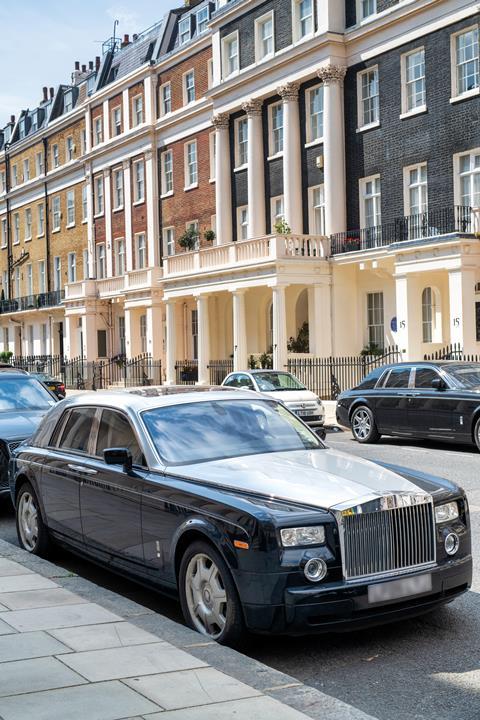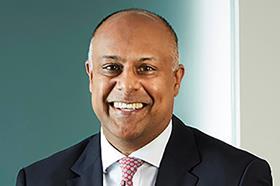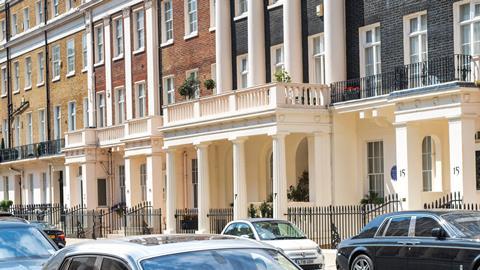High-net-worth conveyancing has never been so lucrative, as the ‘race for space’ post-lockdown combines with a resurgence of interest in prime London property. Cutting SDLT merely fuelled the flames, hears Marialuisa Taddia – and there is little sign yet of the market cooling off
The low down
The moment when the first Covid lockdown put the UK property market into a deep freeze is a receding memory. June 2021 saw the highest ever number of transactions. This placed huge pressure on conveyancing practices serving the top end of the market. Not least, the wealthiest clients were surprisingly keen to benefit from a time-limited SDLT ‘holiday’. Rich foreign buyers are back, and their solicitors are taking instructions to reflect their preferences – cue huge activity in prime central London, and a boom in new low-maintenance, high-end apartment developments. But the resident rich have also done well, with the pandemic changing their priorities. In this market gazumping – a purchaser solicitor’s headache – is commonplace.
'There is little doubt that the stamp duty holiday added a sense of urgency to the market and distorted normal patterns of transactions'
Lucian Cook, Savills
Property lawyers are still experiencing the effects of government measures aimed at restarting the stalled property market in 2020. In July that year, chancellor Rishi Sunak scrapped the stamp duty land tax (SDLT) on the first £500,000 spent on buying a property. This was then reduced to £250,000 between 1 July and 30 September 2021 when the concession finally ended, and the nil-rate band returned to the standard amount of £125,000. Scotland and Wales also introduced cuts to their own land tax over the same period, albeit less generously.

‘There is little doubt that the stamp duty holiday added a sense of urgency to the market and distorted normal patterns of transactions,’ says Lucian Cook, head of residential research at Savills. This produced three spikes in 2021 transactions: in March, when the concession was originally expected to expire; in June (when the maximum saving of £15,000 ended); and in September.
Top end
Notably, UK £1m-plus residential sales last year were reportedly up 60% on 2019 at Savills.
‘It has been an extremely busy period in the market,’ says Maurice Turnor Gardner partner Edward Burton, who advises private clients on prime and super prime residential property such as listed buildings and country houses. Aside from the effect of the SDLT holiday, there have been other ‘very important driving forces in the market’, he says, such as a shift in buyers’ priorities in the wake of the pandemic, very favourable interest rates and record-low mortgages.
And, despite the end of the chancellor’s concession in September, Burton says: ‘The activity levels have not tailed off, which is perhaps not surprising given this dovetailed with the increase in international buyers following the easing of travel restrictions over the summer and the momentum in the market more generally.’
‘In the last few months of 2021 there has been a very significant uptick in interest in [prime central London],’ according to Keystone Law partner Ian Cooke. For example, the number of new prospective buyers registering in Mayfair and Knightsbridge in September was 11% higher than in the same month of 2020. There is now ‘significant interest’ from buyers in ‘the very best properties’, he reports. ‘Demand for the best in class has been surging well beyond 11%, but supply remains constrained.’
In the last three months of 2021, almost £2bn was spent on properties costing £5m or more in London’s super-prime residential market – this was the highest quarterly spend since Savills’ records began in 2006.
According to Knight Frank, the number of offers accepted in prime central London was 116% higher in November 2021 than in the same month in 2020. ‘It is indicative of how demand has shifted back towards London as the pandemic has evolved. In a sign of what may be to come, new demand is rising faster [in the capital] than elsewhere in the UK,’ the property agent said.

For Cooke’s wealthy clients from the US, the far east and the Middle East, London ‘remains a key investment location’ because of its ‘stable legal system’, as well as its culture, art and entertainment.
Furthermore, London is considered ‘good value on the global stage with real upside potential, especially for those with dollar-based currencies converting into sterling, given the current weakness of the pound’, he says. Nevertheless, some property prices in prime Mayfair, Knightsbridge and Belgravia are still below their 2014 peak, Cooke points out.
Mishcon de Reya partner Sonal Thakrar, whose practice is largely focused on prime and super prime central London properties, says that this segment of the property market ‘has jumped back significantly, and while rural purchases are still being made, central London has become sexy again.
‘London is viewed as a significant investment for real estate for capital growth and rent yields,’ she says. ‘It is a great dinner conversation among the socialites and powerful.’
‘London remains a truly global city and a convenient, safe and appealing base for UHNWIs [ultra-high-net-worth individuals] even in uncertain times,’ says Farrer & Co partner Laurie Horwood.
‘International buyers have undoubtedly been less present, but are now beginning to return, seeking high-quality long-term properties,’ he says. By this he means assets upwards of £40m. Horwood says the capital is experiencing ‘much of the frenzied activity’ seen in the rural market in the early part of the pandemic, with competitive bidding and gazumping common.
‘We are seeing serious investors with impressively large budgets, with a particular uptick in interest from the US at the moment,’ he adds.
Wedlake Bell senior associate Parminder Sidhu points to London’s ‘exciting ultra-high-end residential developments’ that are drawing interest from Asia and eastern Europe, a trend that she expects to continue. ‘Schooling and the lifestyle associated with London are key attractions to these clients,’ she says.
The relaxing of international travel restrictions has made ‘a substantial difference’ to Cooke’s practice, which is heavily reliant on foreign buyers, although this depends on the country.
Clients returning to Hong Kong must quarantine for 14 days (down from 21, as of 5 February) in an approved hotel facility. Cooke says this is ‘a heavy obligation which puts many of our Hong Kong clients off travelling to the UK because of the hassle on returning [to] their homeland’.
Nevertheless Cooke says clients are keen not to miss out on the ‘great value’ London offers at the moment and a number of Hong Kong clients have been investing big sums (£25m or £40m at a time, for example) in residential property in prime central London. ‘They have been buying sites unseen because of the travel restrictions or, in some cases, sending representatives over on their behalf to look at properties,’ he says.
Wild in the country
House prices in the UK’s ‘prime regional’ housing market continued to outpace prime central London in 2021, with average growth of 9.3% compared with 2% in central London. The £2m-plus Cotswolds country house market, which saw prices rise by almost a quarter (23.4%), was ‘the standout performer’ last year, followed by luxury homes on the coast of Cornwall and Devon, and the private estates of Surrey, according to research published by Savills in January.
Forsters partner Cecil Henry, who focuses on the purchase of estates, farms and country houses, says: ‘The last 18 months have been the busiest I have known in the country market in the past 20 years. Driven by a move out of towns and a lack of supply, properties that are sold and which have their own particular USP have been going easily at or above the guide. In some cases, we have had to do 12/24-hour exchanges.

‘We have dealt with a whole host of significant rural transactions – whether it be £2m-£5m country house with garden, extending to £12m-£15m with some acreage and then extending again to the larger trophy houses and estates/farms – with one we sold for just shy of £45m and another at £100m,’ he says.
Paddy Lynam, a partner in BDP Pitman’s agriculture and rural team, says: ‘While the Cotswolds continues to be desirable at the top of the market, areas such as Wiltshire, Somerset and even Northamptonshire have seen a big increase in prices pushed by demand.’ Last year, Lynam acted for three clients leaving London for Wiltshire, with budgets ranging from £1.7m to £5m.
Garden city
The pandemic led to demand for bigger homes and gardens, including by international wealthy clients who are looking ‘more than ever for properties in prime central London, with as much space as possible and with the ability to move easily around central London’, Cooke says.
‘Freehold houses and smart new development apartments with excellent communal facilities have been popular,’ he adds, pointing to the record prices achieved by new apartment developments. In the last six weeks of 2021, Cooke exchanged contracts on a property with a sale price of £11,000 per square foot, which is one of the highest prices by area ever achieved in London. ‘This shows that the ultra-high-net-worth buyers will pay top prices for world-leading, best-in-class apartments and houses.’
According to Beauchamp Estates, super rich buyers in prime central London want mansions and grand townhouses with a minimum of 10,000 sq ft living space (and in some cases upwards of 30,000 sq ft) with gardens, and 6,000 sq ft penthouses with private roof-terraces.
Outside the prime spots of central London, Burton reports ‘a great deal more interest in larger family houses with garden in outer prime areas such as Dulwich and Wimbledon’. This reflects a trend that has seen the price of a six-plus bedroom house in the leafy south-west and west of the capital rise by 12.1% and 15.1%, respectively, since March 2020, according to Savills.
Burton also highlights ‘increasing levels of activity’ in the market for flats in recent months, in what he considers ‘a slight rebalancing away from the pandemic market’.
Anton Osborne, residential property director at Taylor Rose MW, focuses on new-build flats in London in the £1m-£2.5m price range for overseas clients – mainly from China/Hong Kong and the Middle East. He cites a recent example of a Chinese client who bought a £1.5m flat in Ealing for their son studying in central London that will be kept as a holiday home on completion of his degree.
Osborne says that new-build flats are common because overseas clients prefer to invest in properties that cause them ‘the least amount of hassle’. He explains that new properties are ‘more desirable’ because they are built with ‘green legislation in mind’ and avoid some of the ‘traps’ of leasehold ownership such as onerous ground rent and cladding issues.
'Last year instructions shifted from central London to big houses with acres of land and woodland in Kent, Oxfordshire or by the coast with sea views'
Sonal Thakrar, Mishcon de Reya
In their quest for more space and greenery, wealthy clients have looked beyond the capital to rural and coastal spots. ‘There has undoubtedly been a significant uptick in interest in country property,’ says Burton. ‘We have undertaken more transactions outside London than ever before.’ He expects to see ‘continued focus on outside space and a split between city and country property’.
‘Lockdown, restrictions and the significantly reduced need to commute have seen many clients move “back home” or to be nearer to family – certainly away from the cities,’ says BDB Pitmans partner Hema Anand, whose clients include high-net-worth and UHNWIs who are UK residents. ‘Rural properties meet their new needs for greener surroundings and more affordable space to accommodate more than one office, for example.
‘Whether the trend continues very much depends if there is enough stock to meet increasing demand and a levelling off of the sharp rise in prices for rural properties. Bidding wars and lack of stock may make clients rethink their move,’ she says.

Horwood saw a ‘dramatic increase in the number of country house and estate transactions in the early part of the pandemic’, but notes that the trend is continuing ‘with slightly less fervour – clearly attractive rural properties are now commanding a premium’.
‘The move to the countryside has seen price growth outstrip London,’ says Withers partner Pervaze Ahmed. ‘The leading estate agents say this trend will continue and I tend to agree as hybrid working is here to stay for the foreseeable future.’ Ahmed’s practice has largely focused on high-value residential properties in London, but he has ‘personally undertaken more transactions involving rural property than I have done previously in my career’.

Sidhu predicts ‘most likely an increase in high-end primary residence purchases in rural areas as that allows luxury living with added features not always available in [central London], such as swimming pools and tennis courts along with the likes of the usual home gyms and cinemas’.
In 2020, Thakrar saw ‘a significant shift in investment from urban to rural and home counties property,’ not only in her own practice, but also within her team and other law firms.
‘From high-value central London penthouses, townhouses and lateral apartments, the instructions shifted to big houses with acres of land and woodland in Kent, Oxfordshire or by the coast with sea views,’ she says. Most of these purchases were second homes ‘for escape in the event of continued lockdowns or for a better quality of life and wellbeing’.
But from the second quarter of 2021 Thakrar’s practice began to revert to high-value residential properties in central London for international investors and UHNWI ‘non-dom’ resident clients, resulting ‘a significant number’ of transactions in 2021.
Much also depends on the provenance of the client. Osborne says the events of the past two years do not signify ‘a shift in investment strategy’ away from central London, given that ‘overseas clients are not looking to move into rural property.
‘Transactions were effectively put in abeyance during the pandemic, leading to property prices flatlining.’ Overseas clients simply postponed plans to buy in central London.
‘There has been a lot of commentary on there being a mass exodus from London, but I have seen a mix of clients buying rural properties and continuing to buy properties in the capital,’ notes Bethan Owen, partner at Kingsley Napley. She says clients are either leaving London for good by moving to a rural location or Scotland, or are staying and upsizing to larger homes.
Owen recently advised a client who moved from London to a £4.5m property near Andover in Hampshire; and another who traded up from a £2.75m house to one costing £4.5m. ‘These are clients who still work in London and therefore don’t want the commute, and also love living there,’ she says.
At the same time, there has been demand for pieds-à-terre, especially from clients who have moved out of the capital but still need a foothold there as they contemplate returning to work, Owen remarks.
Rich pickings
June 2021 saw nearly 200,000 transactions, the highest number for a single month since records began in 2005, according to HMRC. There were 1.55m transactions in the year to September 2021, 30% more than the annual averages for 2017-2019; while average property prices in the UK rose by 12.3% over 18 months, according to Savills, which sells residential and commercial property across the world.
Higher up the value chain, research published in January by Beauchamp Estates shows that in prime central London – from Belgravia and Knightsbridge to Mayfair – the number of luxury homes priced above £15m almost doubled in 2021, with 32 sales, compared with 17 in 2020, reaching a total of £773m.

Take the £21m Grade II-listed property at 93 Eaton Square in Belgravia Beauchamps sold to a US billionaire (understood to be Leon Black), or a £45m townhouse in Grosvenor Crescent, sold to a Hong Kong billionaire.
The property agents attribute this ‘surge’ to ‘the huge accumulation of wealth by billionaires’ since the coronavirus crisis began, and to interest-only ‘billionaire mortgages’ that are behind a ‘massive buying spree of luxury homes in London’. This is set to continue to this year, they say.
In the UK alone, the number of billionaires reached a record 171 during the pandemic, according to the latest Sunday Times Rich List. This was 24 more than in 2020, and ‘the biggest jump’ in over three decades. Their combined wealth grew by nearly 22% to £597bn.
Taxation
There were many factors driving activity in this segment of the market, but what was the role of the SDLT holiday?
Between 8 July 2020 and 30 June 2021 the most that buyers could have saved was £15,000 on the purchase of a new home; reduced to £2,500 until the end of the concession on 30 September.
Horwood, who handles properties worth up to £100m, says: ‘Interestingly, many of our wealthiest clients were adamant that they wished to benefit from the SDLT holiday and were intent on completing transactions before the deadline.’ Especially the first deadline, when the saving was more substantial.
‘It was fascinating to witness the psychology of some clients at the top end insisting their deals completed within the SDLT holiday on 30 June,’ says Thakrar. She says this was more down to the idea of ‘getting “a discount” or “free money” rather than affordability or budgeting. I suppose cynically that’s why the über rich are exactly that, they know how to make money and do so cleverly, taking advantage of any and every opportunity.’
Cooke says that although the tax break had little direct impact on the prime and super prime central London market (the concession was only available on the first £500,000 of value), many buyers he advised ‘did actually want their deals to conclude within the stamp duty holiday period. Even though they might have been spending £10m or £20m, carrying a seven-figure SDLT bill, their view was that if they could save £15,000 [in tax] then they would prefer to do so’.
But he adds that by and large the benefit to the prime and super prime market was ‘indirect’ in that ‘the general property market was made to look and feel buoyant as a result of the chancellor’s intervention’.

Homebuyers saved around £6.4bn during the 15-month SDLT holiday, split about evenly between properties below and above the £500,000 threshold. Total SDLT receipts to the Treasury decreased by just over £1bn to £9.62bn compared with the same period in 2018/19, according to Savills’ analysis published in November. Receipts from sales of properties in the £1m-plus bracket grew by 48%, generating more than 50% of total receipts.
Savills’ Cook said that the Treasury ‘may well look back on this as a pretty generous giveaway given the unexpected strength of the market’, adding that ‘the uncomfortable truth is that the surge in activity appears to have been primarily driven by changed lifestyle priorities and the so-called race for space’.
Thinktank Resolution Foundation said in August that ‘the transaction tax holidays have been problematic less because they were inflationary, and more because they have been wasteful’.
According to Ahmed, the end of the SDLT holiday ‘will certainly not stop’ international buyers from purchasing homes in prime central London, but he adds that other property tax changes ‘have deterred a number of overseas buyers’ and made this market ‘less attractive’.
These include the 3% additional stamp duty rate on second homes and an extra 2% charge on any property bought by non-UK residents in England and Northern Ireland (introduced in April 2016 and 2021, respectively). Since April 2015 non-residents have also been subject to capital gains tax (CGT) when they sell or dispose of a UK residential property. Burton points to other ‘significant changes’ such as the tax on corporate vehicles that own residential homes in the UK, introduced in 2013 and called ‘annual tax on enveloped dwellings’.
‘Given the costs of the pandemic, we are likely to see further revenue-raising measures in the medium term, albeit it was interesting to see the chancellor’s recent announcement that reforms of [CGT] have been shelved for the moment,’ Burton says. This might be some form of land or wealth tax or significant reform to council tax. All of which could have an effect.
So what about transactions and prices in the near future?
'I believe this year the charge will be led by overseas money, especially if international travel opens up to pre-Covid levels'
Pervaze Ahmed, Withers
Beauchamp Estates said that, driven by Chinese and Russian buyers, the volume of deals for homes priced above £15m could double again this year, with around half a dozen homes worth up to £100m scheduled to be listed for sale.
House prices in prime central are expected to grow by nearly a fifth (19.1%) over the next four years, four times the rate across London overall (5%), fuelled by overseas equity, according to Savills forecasts shown at the Law Society’s national property law conference in October.
‘There is optimism that the rebound we were all expecting in 2022 will not be derailed by Omicron and that prime London may prove to be a particularly buoyant segment of the UK market over the next 12 months,’ says Keystone Law’s Cooke. He adds that this will be especially true if global travel restrictions continue to ease in the months ahead.
‘Overall, the outlook for the high-end residential market is positive for 2022,’ says Horwood, pointing to ‘a noticeable return of overseas clients’ who had waited ‘patiently’ throughout most of 2021. But a shortage of supply of ‘best-in-class, high-value prime properties is currently the main barrier to transacting,’ he says.
Ahmed does not expect 2022 to be as buoyant as last year. Nevertheless he also expects to see a positive market: ‘Last year was in the main fuelled by domestic money. I believe this year the charge will be led by overseas money, especially if international travel opens up to pre-Covid levels.’
Foreign buyers are expected to take advantage of a weak sterling as well as a shortage of stock, and ‘historically cheap’ money lending, notwithstanding the recent interest rate rise, he says. ‘The one caveat is the “dark cloud” in the shape of Covid and its various variants looming large.’
Marialuisa Taddia is a freelance journalist






























No comments yet